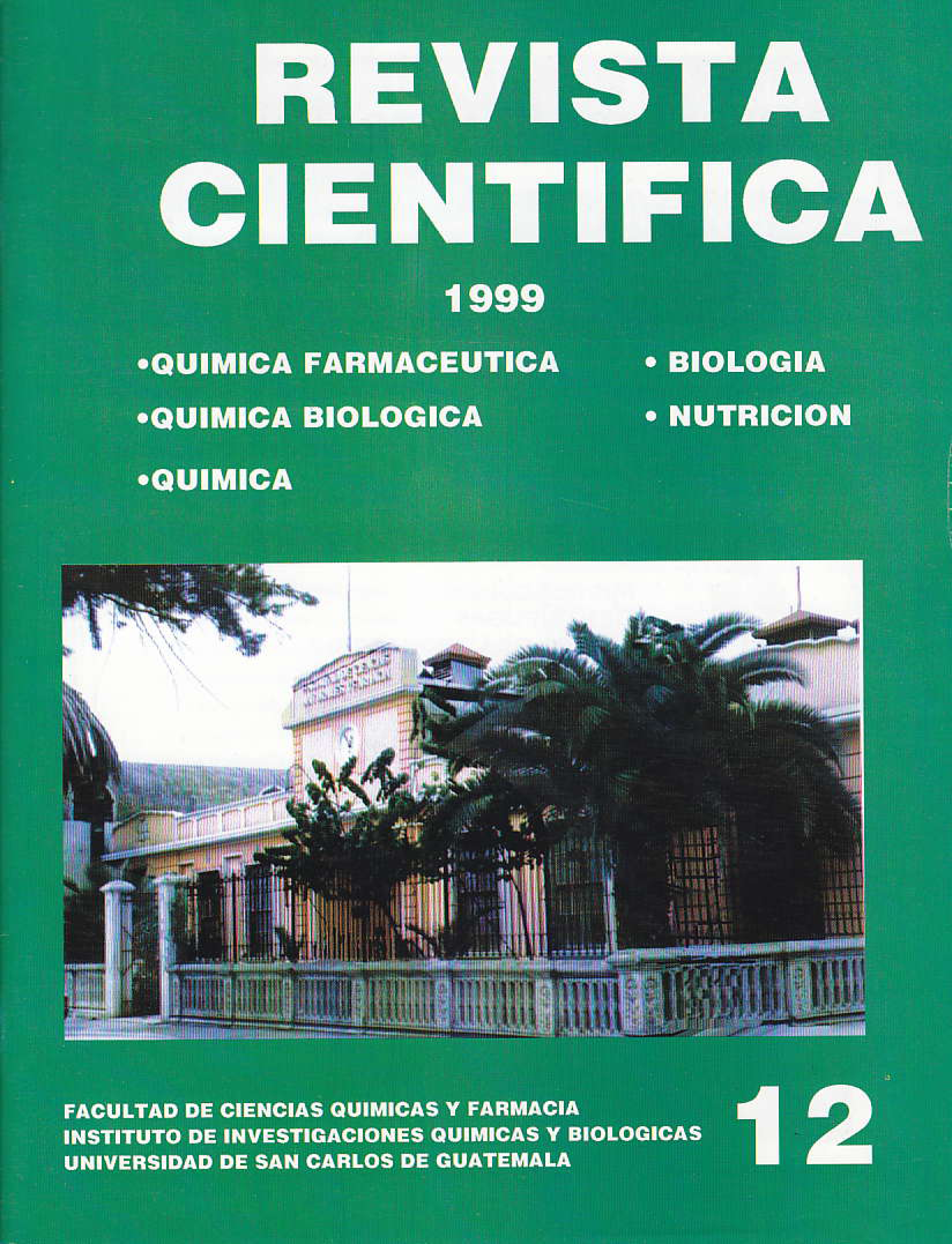Evaluation and knowledge of the natural faunal heritage in danger of extinction in Guatemala (Phase I and II)
DOI:
https://doi.org/10.54495/Rev.Cientifica.v12i1.347Keywords:
evaluation, knowledge, natural faunal heritage, danger of extinction, GuatemalaAbstract
Since the end of the last decade, Guatemala has been involved in conservation actions, which are reflected in the issuance of Decree 68-89 of the Law on Protection and Improvement of the Environment, Decree 4-89 Law of Protected Areas, Red List of Wildlife for Guatemala located in 1994 and 1996, ratification of the Global Strategy on Biological Diversity (February 21, 1995), etc. Despite this, it is known that in Guatemala there are many institutions that collect, manage and generate information on the fauna of our country. Unfortunately, this valuable information is dispersed, isolated or not very accessible to other researchers, so it is difficult to have a exact panorama of faunal knowledge in Guatemala. Seeing this problem, the CDC carried out from February '995 to June 1998 the project “Evaluation and Conservation of the Endangered Natural Fauna Heritage of Guatemala (Phase I and 11)”, co-financed by several research institutions in the country. The objective of this project was to compile data on the diversity, ecology and distribution of national fauna with emphasis on those in danger of extinction or to organize and systematize all the information, in order to make its management practical and useful. to users and decision makers.
Downloads
References
Valdéz, Marroquin de, Rosales AC, Rarr C. Evaluación y Conocimiento del Patrimonio Natural Faunistico en Peligro de Extinción de Guatemala. Fase I Informe Final. Guatemala: CDC. CECON, DIOI. 1996. 33pp.
Campbell JA, Ford LA Phylogenetic relationships of the colu-brid snakes of the genus Adelphicos in the highlands of Middle America. Occasional papers, University of Kansas 1 982; 1 00: 1 -22
Vanninl JP. A new species of beaded lizard at the Motagua Valley of Guatemala. Journal of Herpetology 1988; 22 (4); 457468.
Campbell JA The University of Texas Arlington 1991 . (com. pers.)
Smith E. Universidad de Texas en Arlington 1 996 (com. pers.) 6. Reid F. Royal Ontario museum, Canada 1990. (com. pers.)
Engstrom et al. New records of two small mammals. Guatemala The Southwestern Naturalist 1993; 38(1): 6 82, https://doi.org/10.2307/3671653 DOI: https://doi.org/10.2307/3671652
Valdéz, et al. Evaluación y Conocimiento del Patrimonio Natural Faunistico en Peligro de Extinción de Guatemala. Fase I. Infome Final. Guatemala. CDC, CECON, IIQB, DIGI, USAC. 1997.61 PP.
Valdéz, et al. Evaluación y Conocimiento del Patrimonio Natural Faunistico en Peligro de Extinción de Guatemala. Informe Final. Guatemala; CDC, CECON, DIGI, USAC 1988 30pp
ASIES. Alianza Centroamericana para el Desarollo Sostenible 1996.34 PP.
Downloads
Published
How to Cite
Issue
Section
License
Copyright (c) 1999 Olga lsabel Valdéz, Dania Marroquín, Ana Carolina Rosales, Mario Jolón, Carla Ramírez, Lemuel Valle, Marco Vinicio Centeno, María del Pilar Negreros, Liza lzcot, Rebeca Orellana, Manuel Acevedo, Karin Sandoval, Franklin Herrera, Luz Elena Reyes, Carlos Godínez

This work is licensed under a Creative Commons Attribution 4.0 International License.
Authors who publish with this journal agree to the following terms:
- Authors retain copyright and grant the journal right of first publication with the work simultaneously licensed under a Creative Commons Attribution License 4.0 that allows others to share the work with an acknowledgement of the work's authorship and initial publication in this journal.
- Authors are able to enter into separate, additional contractual arrangements for the non-exclusive distribution of the journal's published version of the work (e.g., post it to an institutional repository or publish it in a book), with an acknowledgement of its initial publication in this journal.
- Authors are permitted and encouraged to post their work online (e.g., in institutional repositories or on their website) prior to and during the submission process, as it can lead to productive exchanges, as well as earlier and greater citation of published work.









